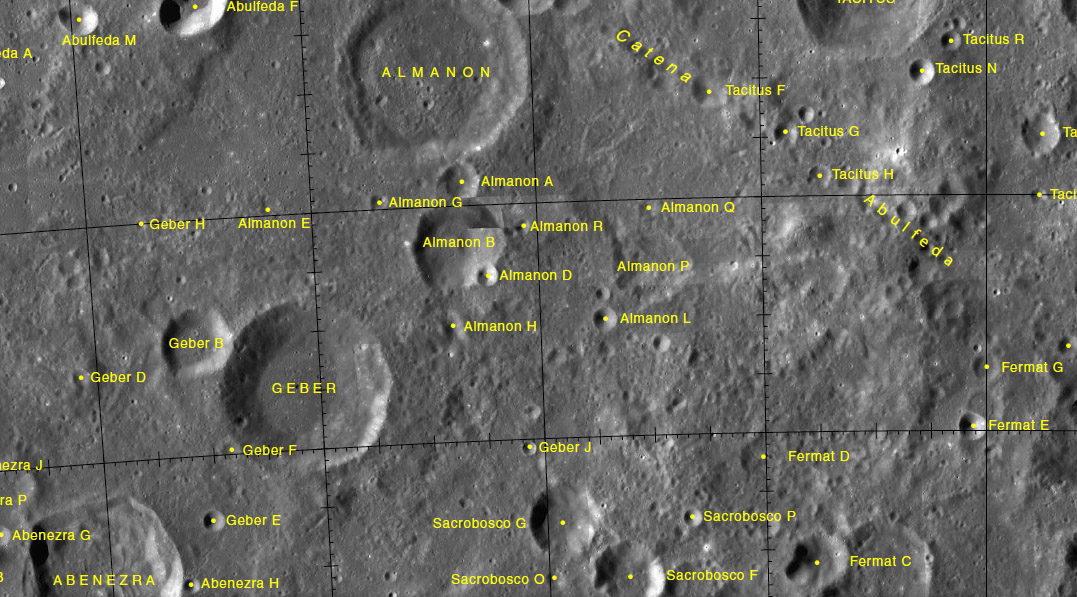February 16, 2023
IAU Map Update
Originally published March 25, 2013

full scale excerpt from IAU 1:1 Million-Scale Maps of the Moon, LAC 96 (USGS)
The ultimate map of official IAU nomenclature has been revised and updated. For a number of years the official nomenclature was displayed on the 144 sheet 1:1 million map series LAC mosaics. Two versions of the maps were available because no single base map was adequate to display the entire Moon: the Lunar Orbiter IV mosaic and the shaded relief drawing, both constructed by the US Geological Survey in Flagstaff, Arizona. Now that the Lunar Reconnaissance Orbiter Camera (LROC) team has produced mosaics of the entire Moon using the Wide Angle Camera (WAC), the IAU nomenclature group, led by Jenny Blue at Flagstaff, has transferred the nomenclature to the WAC Global Morphologic Map. The previous two maps are no longer available but thankfully any existing links to them are automatically rerouted to the new WAC map sheets. The other change that is immediately visible is that the names are displayed in yellow. This improves legibility compared to the previous white font and in general it works well. Significant effort went into ensuring that names are correctly placed on intended features, which is sometimes difficult for lettered craters near the limb. Master lunar mapper Ewen Whitaker checked the identifications of 56 ambiguous lettered craters, in some cases correcting positions to best match the original intentions; this has resulted in some names being attached to different features than on earlier maps. The WAC mosaic used (apparently the same as QuickMap) has higher illumination than the Nearside Spectacular! mosaic used for the 21st Century Atlas of the Moon. Because the names are a separate layer from the mosaic, conceivably (although having 144 map sheets would make it tedious) other background mosaics could be substituted, such as the not yet released full Moon mosaic on display at the Lunar and Planetary Science Conference. The same nomenclature is also available on the QuickMap (although I don't know how often it is updated) as a rotatable globe viewable at a variety of magnifications. The QuickMap version eliminates the need to load different map sheets to see nearby areas. This new IAU nomenclature map is vastly superior to earlier versions because of the uniform background mosaic, and I thank Jenny and the USGS team for releasing it.
Chuck Wood
Related Links
Rükl plate 56
21st Century Atlas chart 13.
Yesterday's LPOD: Dents, Chains And Superposition
Tomorrow's LPOD: Scarping About
COMMENTS?
Register, Log in, and join in the comments.



